
EXHIBITION AT AYYAM GALLERY DUBAI (DIFC) Sabah Arbilli: 99 Names
Aug 15, 2015 Calligraphy
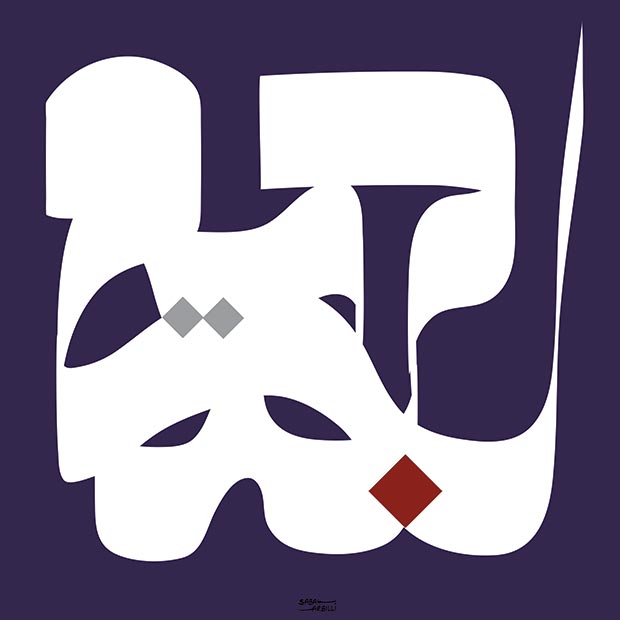 Sabah Arbilli, Al Baee3, archival print, 60x60 cm, 2015 / Courtesy of the Artist
Sabah Arbilli, Al Baee3, archival print, 60x60 cm, 2015 / Courtesy of the Artist
Recognised as a master of Arabic calligraphy, Arbilli is currently exploring abstract interpretations of the written word and a variety of media. The exhibition’s presents computer-generated archival prints. Imbuing his sculptures, paintings, works on paper, and installations with intricate symbolism and evocative readings of ancient scripts and texts, the artist updates the centuries-old tradition through a transformative formal approach.
In '99 Names', Arbilli presents the referential names and attributes of God that appear in the sacred texts of Islam. With the dynamism of abstract lines and the infinite space of saturated hues, the artist creates meditations on form that communicates the meaning of each name through the visual splendour of endless movement and measureless colour.
In a work that reads Al Rahman (The Merciful), for example, Arabic script appears in the process of regeneration as faint white and gray letters float from the solid black body of the main text, an image that describes compassion as a basic tenet of Islam. Another work includes Al Muhaimin (The Guardian), and details the belief that God is all-knowing, seeing both the visible and hidden, with two curved forms (the Arabic letter noon) that grow from a central source, encircling the i’jam (or diacritical mark) of the letter as though reaching out to protect the small triangular shapes. The work titled Allah (2015), embodies the various forms of the series as the artist’s script has progressed from one image to the next. Written as five distinctly coloured texts shown as strata of floating masses, the repeated word is unified in its different manifestations, appearing to grow over space and time with grace and measure.
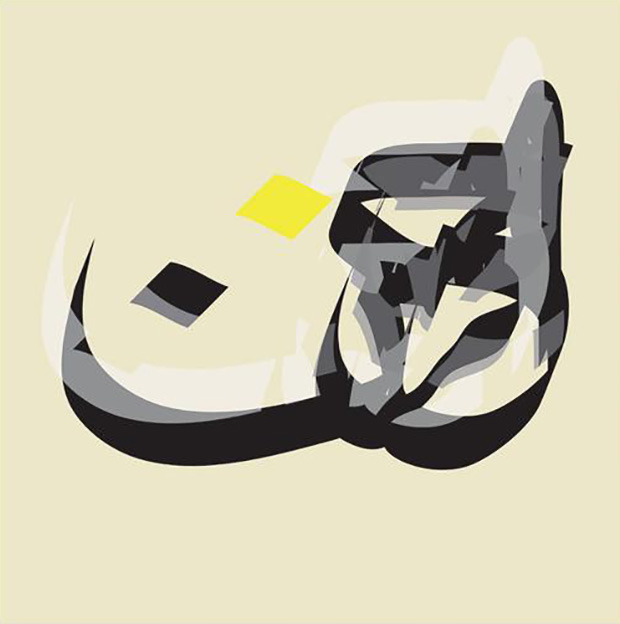 Sabah Arbilli, Al Rahman, archival print, 60x60 cm, 2015 / Courtesy of the Artist
Sabah Arbilli, Al Rahman, archival print, 60x60 cm, 2015 / Courtesy of the Artist
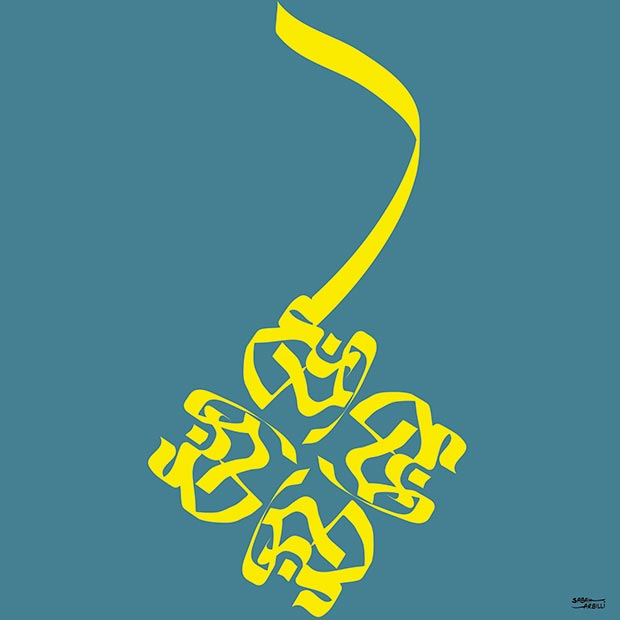 Sabah Arbilli, Al Maan3, archival print, 60x60 cm, 2015 / Courtesy of the Artist
Sabah Arbilli, Al Maan3, archival print, 60x60 cm, 2015 / Courtesy of the Artist
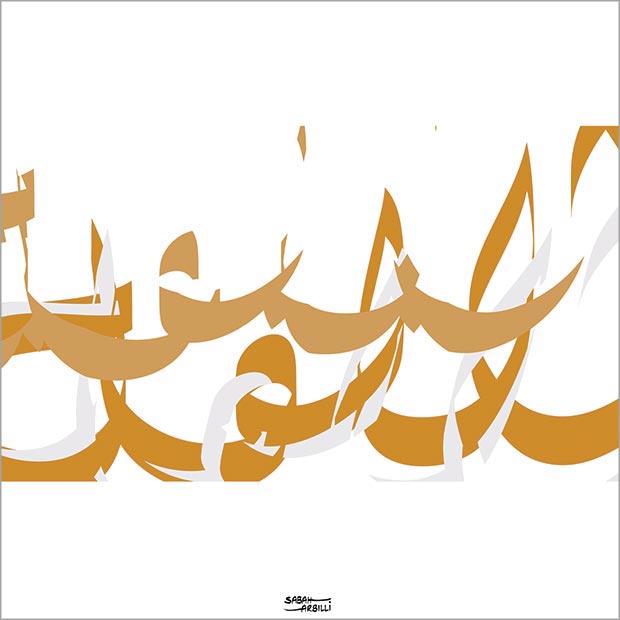 Sabah Arbilli, Al Awwal, archival print, 60x60 cm, 2015 / Courtesy of the Artist
Sabah Arbilli, Al Awwal, archival print, 60x60 cm, 2015 / Courtesy of the Artist
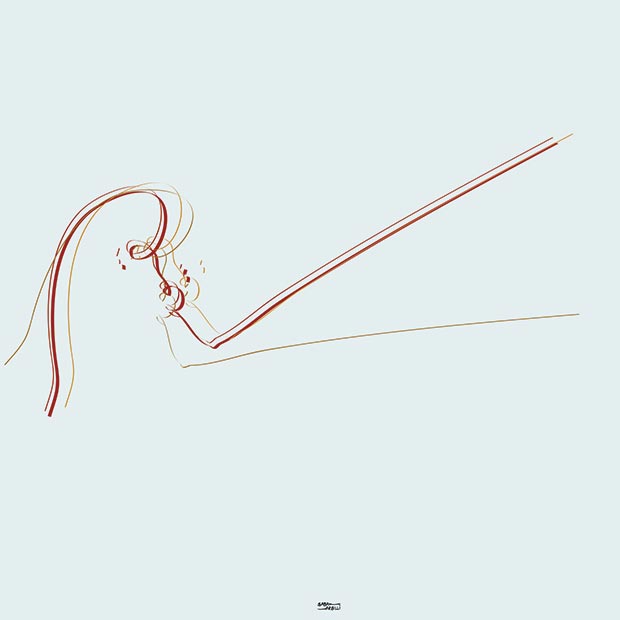 Sabah Arbilli, Al Qayyoum, archival print, 60x60 cm, 2015 / Courtesy of the Artist
Sabah Arbilli, Al Qayyoum, archival print, 60x60 cm, 2015 / Courtesy of the Artist
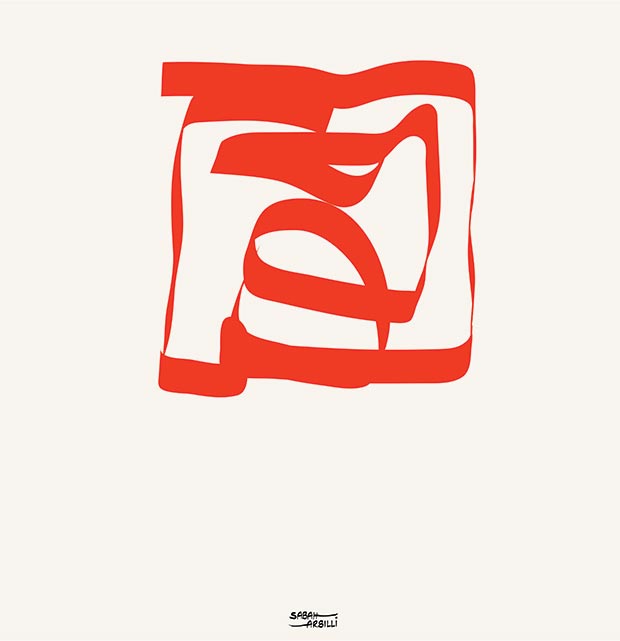 Sabah Arbilli, Al Wahid, archival print, 60x60 cm, 2015 / Courtesy of the Artist
Sabah Arbilli, Al Wahid, archival print, 60x60 cm, 2015 / Courtesy of the Artist
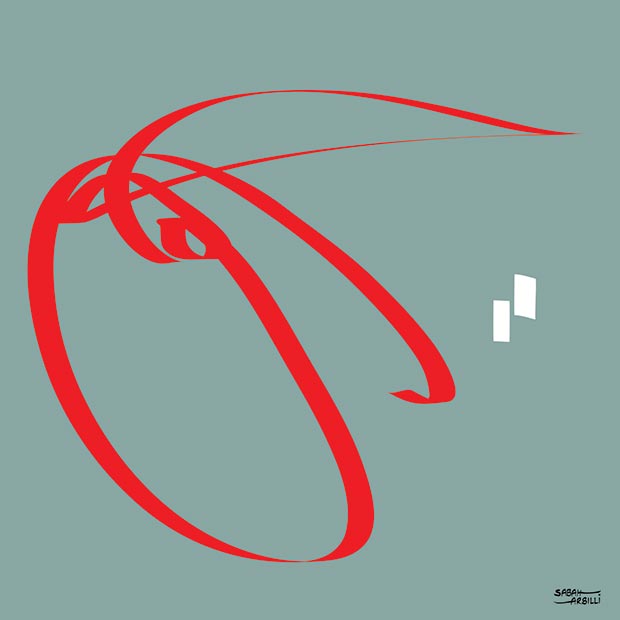 Sabah Arbilli, Al Mtaali, archival print, 60x60 cm, 2015 / Courtesy of the Artist
Sabah Arbilli, Al Mtaali, archival print, 60x60 cm, 2015 / Courtesy of the Artist
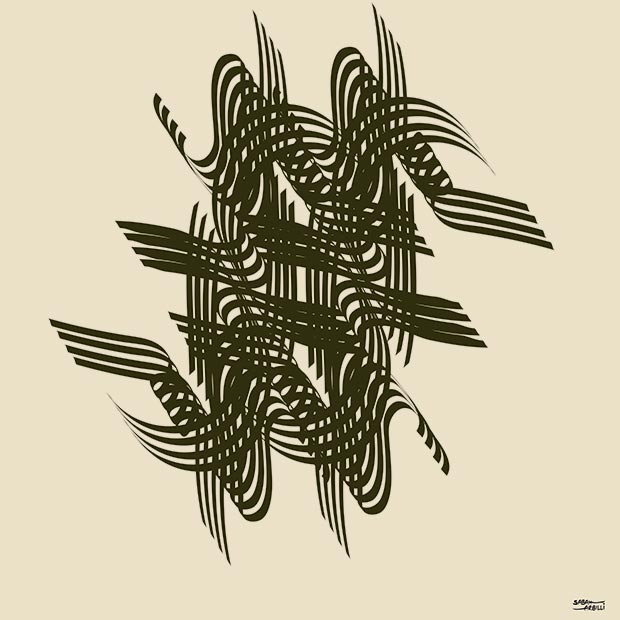 Sabah Arbilli, Al Wakeel, archival print, 60x60 cm, 2015 / Courtesy of the Artist
Sabah Arbilli, Al Wakeel, archival print, 60x60 cm, 2015 / Courtesy of the Artist
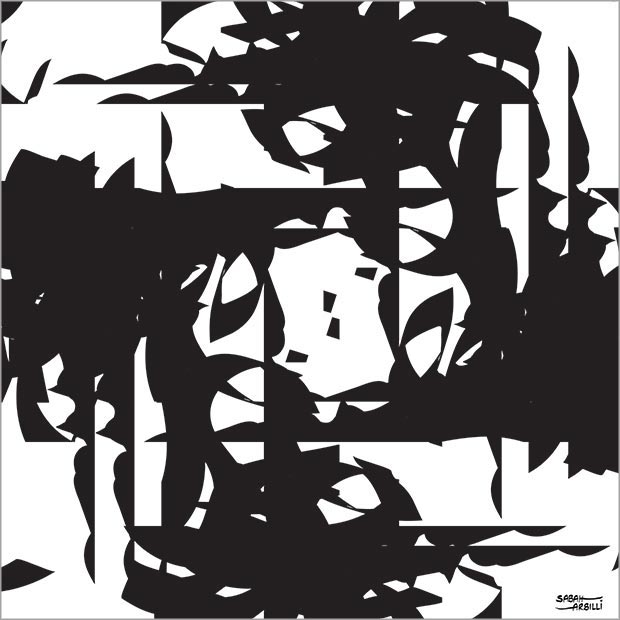 Sabah Arbilli, Zuljalaal Walikraam, archival print, 60x60 cm, 2015 / Courtesy of the Artist
Sabah Arbilli, Zuljalaal Walikraam, archival print, 60x60 cm, 2015 / Courtesy of the Artist
An Iraqi-British artist uses the Arabic letter as an allegorical form in painting, mixed media, sculpture, ceramic, and installation. Seeking to investigate moral precepts and to inspire a reevaluation of various themes, Arabic calligraphy allows Arbilli to create a cogent visual language as text, colour, composition, and guide the viewer through a set of implied questions. In early examples of Arbilli’s work, he adhered to traditional approaches when utilising calligraphic forms in order to understand the theoretical underpinnings of the art form. Once mastering various techniques, he incorporated experimental processes in his practice, gradually arriving at the principles of contemporary abstraction. At the same time, each period of his oeuvre is autobiographical, as the journey of his emigration from Iraq to the United Kingdom can be traced over the course of his artistic development. Themes such as life, change, politics, and the outcomes of man’s choices are described in the overlapping lines and planes that create a sense of volume and depth in his two and three-dimensional compositions.
Born in Iraq in 1977, Sabah Arbilli received a graduate degree in Visual Arts from the University of Wales. Currently based between the United Kingdom and Qatar, Arbilli has widely exhibited throughout the Middle East, Europe, North America, and Australia in galleries, art fairs, biennales, and institutions. An award winning artist, his works are housed in public and private collections, including the national collection of public sculpture in Qatar; the Islamic Museum of Australia; and the United Nations headquarters in Switzerland, where he held a solo exhibition in 2010. The artist’s recent exhibitions include Artspace Hamra (2015); Bait Muzna Gallery, Oman (2015); Katara Gallery, Qatar (2015); and Qatar Foundation, Qatar (2015).
Comments
Add a comment